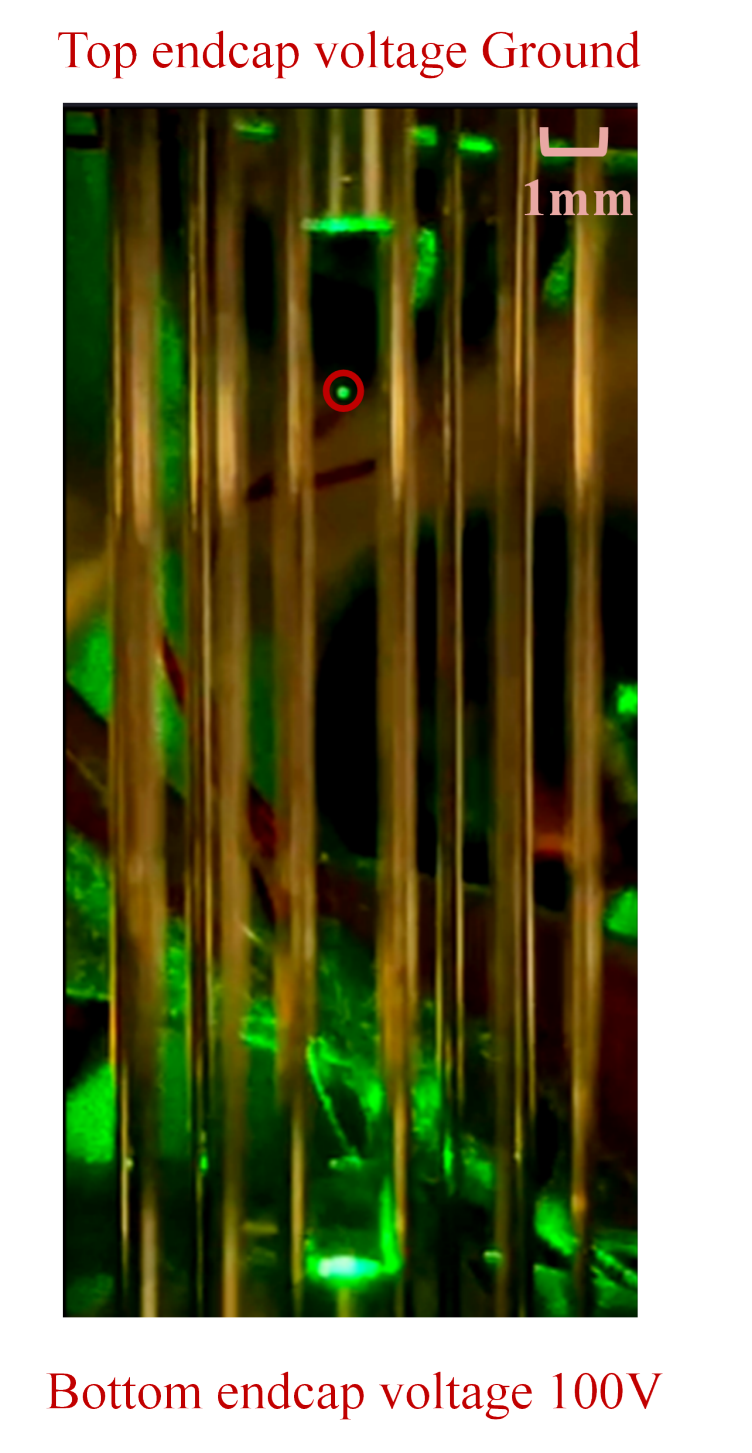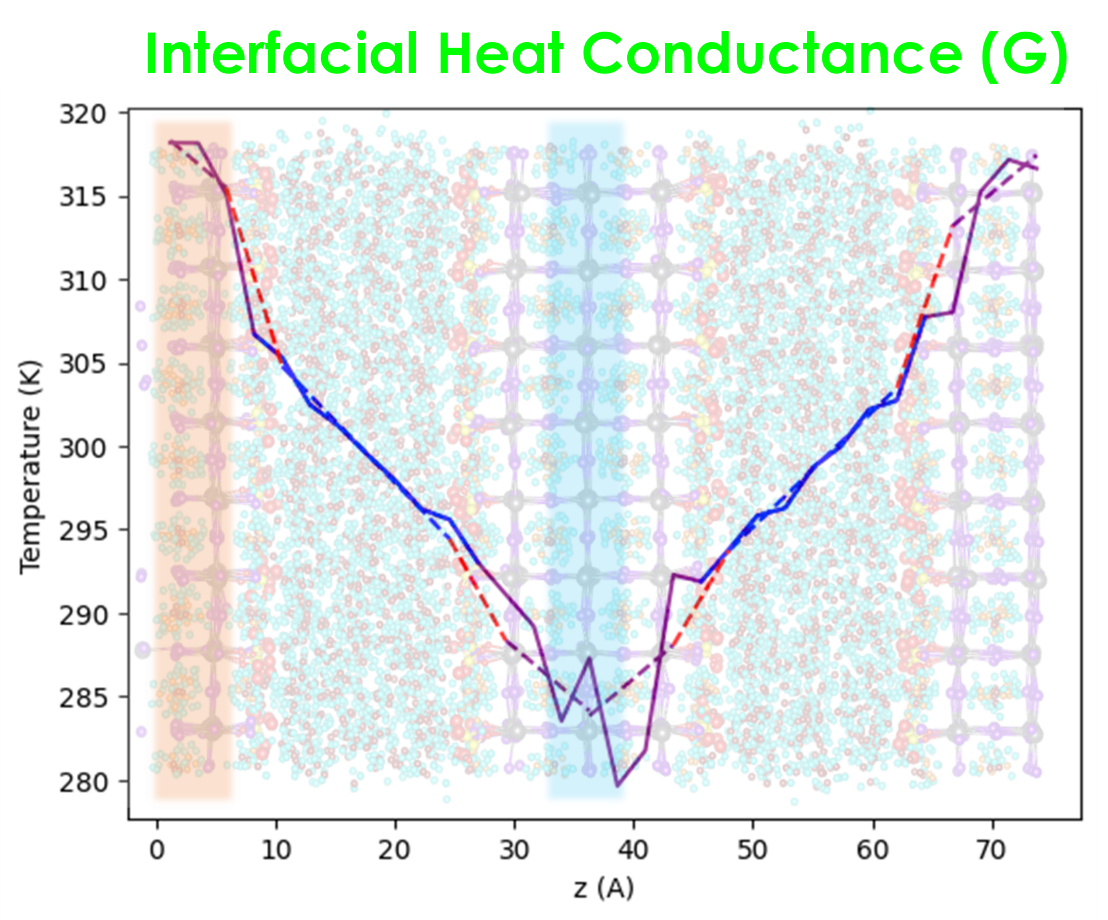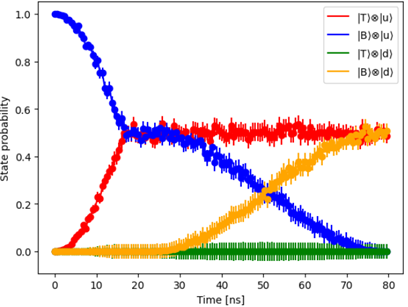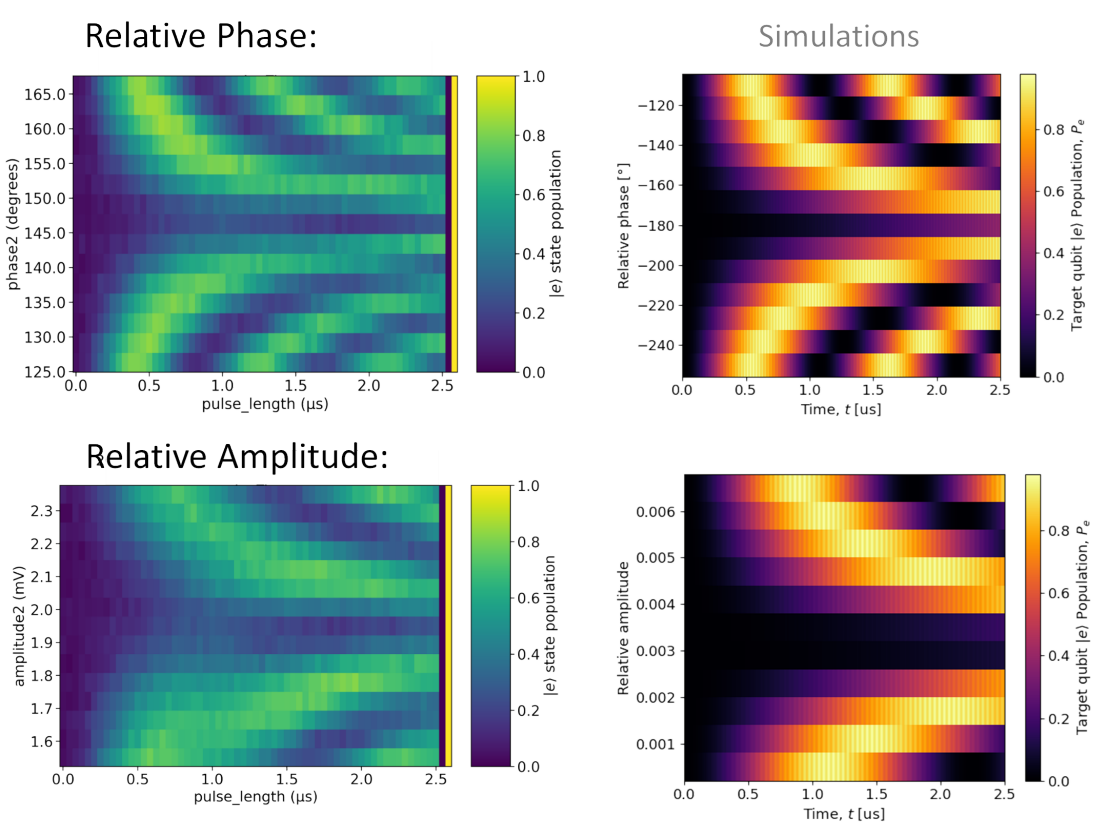Projects 2023
Towards a ballistic gravimeter based on Paul Trap

by Yu Liu, Yuchen Zhao, Giovanni Vio
Host laboratory: Novotny Group
Abstract: Measurement of gravitational acceleration is crucial in fields such as geology and archaeology. Although current measurement techniques using free-falling mirrors or atom clouds easily achieve sensitivity of 10-8 m/s2, the bulky mechanical and optical designs limit the utility of such devices. To develop a device that is theoretically comparable in sensitivity, more compact, and lower in cost, we proposed, built, and tested a prototype of a new type of gravimeter using charged nanoparticles and a Paul trap. With a newly designed Paul trap featuring vertical optical access, we recorded approximately a 14 mm in total fall of a single nanoparticle with the acceleration as 0.24 m/s2 during the first half of the falling. Analysis of the falling trajectory shows that it is modulated by the axial electric field induced by the Paul trap, which is caused by the slow switching off speed of electronics and local minimums of trapping potential. In the second half of the fall, the nanoparticle oscillates strongly before resting at the bottom, with a damping coefficient comparable to that of a harmonic oscillator in the same vacuum environment, indicating that gravity dominates over all other forces when the electronics are fully switched off. However, the camera resolution and refreshing rate limit the extraction of acceleration in this region. Future development of detection system and electronics should enable better measurements of gravitational acceleration. This work explores the possibility of a novel gravimeter and lays the engineering foundation for the Paul trap-based gravimeter.
Laser cooling of colloidal quantum dots

by Federico Dalmagioni, Foivos Vouzinas, Francesco Fortuna
Host laboratory: Kovalenko Group
Abstract: Optical cooling of a semiconductor is a promising technology which allows cryostat free operation but has strict requirements on the material optical properties. The recent advances in the synthesis of perovskite colloidal quantum dots (QDs) led to a new generation of high-quality semiconductor nanocrystals which are promising candidates for the first demonstration of semiconductor laser cooling at the single and ensemble particle level. In this work, we first characterize thermal transport in APbX3 QDs via atomistic simulations to extract the heat conduction parameters, which are then fed in a macroscopic simulation to have an intuition of the cooling timescales and achievable temperatures. We then measure optically the temperature of the APbX3 nanoparticles both at the ensemble level (many QDs involved in the cooling process) and at the single nanocrystal level and we observed a different optical response of the particles when excited with an above or below band-gap laser. However, more extended experiments are required for a solid proof of laser cooling.
Bilayer Graphene WSe2 - Quantum Dot Qubits

by Huaiyu Ge, Peter Koopmann, Filip Mrcarica, Otto Schmidt
Host laboratory: Luisier Group
Abstract: In this Quantech workshop project, we present a novel bilayer graphene-WSe2 quantum dot device with almost full qubit functionality based on simulations. We achieve charge confinement in our device in a self-implemented Poisson-Schrödinger solver with material parameters found from ab-initio calculations with VASP. We reproduce the proximity effect with an enhancement of the spin-orbit coupling coefficient to meV in the bilayer graphene layer adjacent 1.77 meV to the TMDC. An effective readout scheme based on different tunneling rates as well as an implementation of a SWAP gate is proposed. The time evolution of our device on the IBM Falcon finds gate times on the order of nanoseconds. Our simulations and experimentally measured coherence times make our platform a promising candidate for a qubit.
Two-Fluxonium Cross-Resonance Gate

by Pietro Borghi, Sophie Cavallini, Sri Vasudha Hemadri Bhotla, Chidzahi Mabritto
Host laboratory: Wallraff Group
Abstract: In the landscape of superconducting circuits, fluxonium qubits have lately emerged as a promising alternative to transmon qubits due to their superior anharmonicity and coherence times, offering potential solutions to the limitations of transmons. In this Quantech Project, we focus on realizing a fluxonium-based implementation of a 2-qubit CNOT gate, exploiting the Cross-Resonance effect. The proposed gate scheme simply works by sending a pair of microwave tones to the two qubits: a strong off-resonant drive to the control qubit and a weaker on-resonant drive to the target qubit. This alone allows for a 2-qubit operation without the need for flux tuning the qubits away from their preferred operation point, and exclusively utilizing the computational subspace. The project involves both a theoretical and an experimental part. We first started by investigating the theoretical aspects of fluxonium qubits and of the proposed gate implementation, by simulating the system in QuTip. We then moved on to the experimental part, involving the characterization of the first fluxoniums qubits at Qudev, and the calibration of the pulses necessary for the gate operation. The obtained results include a successful demonstration of the proposed two-fluxonium CNOT gate on the experimental side, and a possible path to improve the gate fidelities in the next sample iterations on the theoretical side.